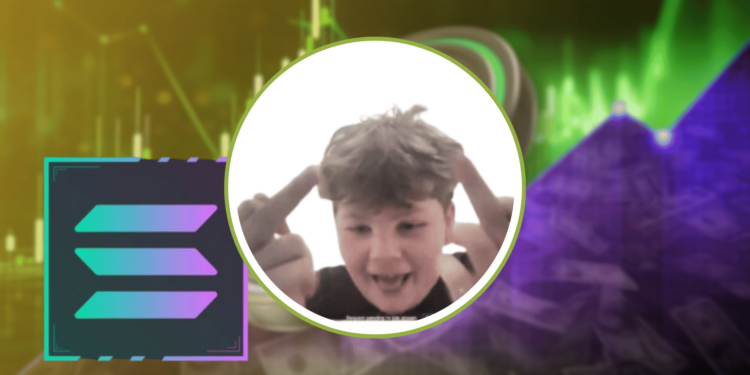- A kid rug-pulled crypto traders for $30,000 profit by creating and selling a memecoin called $Quant, but missed out on over $4 million gains as the coin’s value skyrocketed after the rug pull.
- The kid created two more memecoins called $sorry and $lucy, and rug-pulled traders again, making an additional $24,000 profit.
- The incident highlights the “greater fool” theory, where traders buy overpriced assets expecting to sell them to “greater fools” at even higher prices, ultimately leading to losses for most participants.
In another cautionary tale against chasing “greater fool” games, a kid rug-pulled crypto traders for an unexpected $30,000 profit. However, the self-called “degen” market struck back, sending the memecoin up and making the kid miss out on over $4 million in gains.
The Livestreamed Rug Pull
Interestingly, this recent memecoin rug pull happened live as the kid was streaming the whole process, guided by a mentor. It is notable how euphoric and surprised he got after selling and collecting the money, giving his middle fingers to the camera after fooling his audience.

According to Lookonchain, the kid sold 51 million $Quant for 128 SOL, worth $30,000, netting a $29,600 profit. Yet, the buzz following the rug pull attracted even more liquidity to the memecoin, with the 51 million tokens achieving a $4 million nominal value by Lookonchain’s posting time.
The Kid Strikes Again with More Memecoins
As the crypto community struck back, even doxxing the kid’s family, he created another memecoin called “im sorry” (sorry). Traders bought into it again, just to suffer another rug pull from the kid.
Besides $sorry, the Gen Z Quant creator also deployed $lucy for his third rug pull in a row. As Lookonchain reported, the kid amassed another $24,000 worth of 103 SOL in profits for $sorry and $lucy.
Tracking the Price of Gen Z Quant
Finbold retrieved data from dexscreener at 1 p.m. UTC on November 20, with Quant priced at $0.05935, sustaining its gains. Quant was up 55,770% in the last 24 hours and the kid’s sold stash would now be worth slightly over $3 million, with a $60.3 million market cap.
The Quant/SOL liquidity pool, however, only has a $2 million liquidity, which would make profit realization difficult.
Notably, out of 175,412 total transactions, 95,659 were crypto traders buying the kid’s memecoin after the initial rug pull.
The Psychology Behind Memecoin Mania
This story exemplifies the greater fool theory when traders buy into an overpriced asset, expecting to sell it even higher later. The kid’s early exit for $30,000 was a classic rug pull, creating the memecoin with the sole intention of extracting liquidity from the market.
Traders, hoping to flip the coin for more, became the greater fools of the Gen Z Quant creator. Nevertheless, they did it with the expectation of finding even greater fools to sell to, victims of their own greed.
Commenting on the matter, Kermit warned memecoin traders that most of them will end up becoming somebody else’s exit liquidity, losing money while chasing the illusion of making millions.
“You are not part of the 0.5% who can come out of this memecoin craze a winner. Most of us will lose more than we will make. Half of the timeline will make you believe that you can make millions every day trading memecoins. Instead, you will lose most of your wealth chasing someone else’s exit liquidity. The timeline isn’t trying to help you get rich, it is trying to make you its exit liquidity.”
The cycle of greed was evident as investors continued buying even after the initial rug pull. Ultimately, memecoin markets became popular this cycle, with crypto traders trying to outsmart each other in a zero-sum game.














